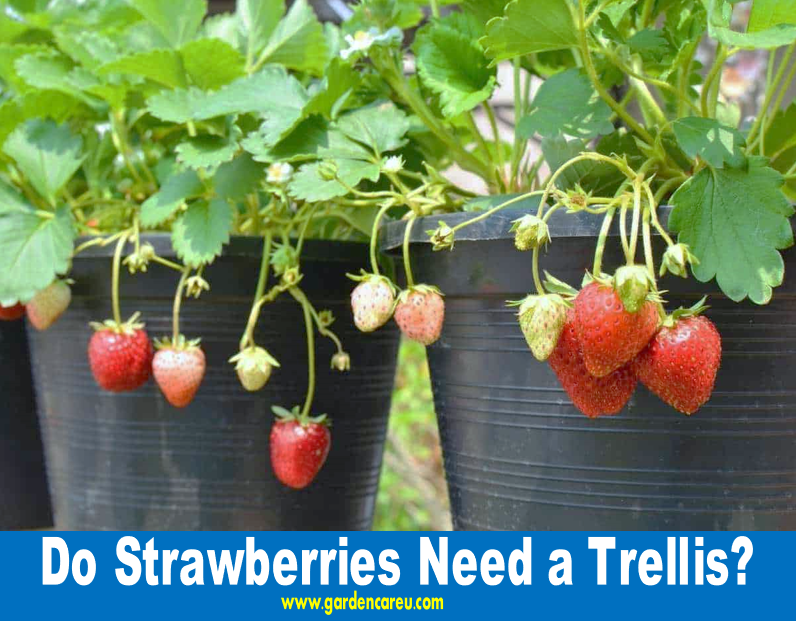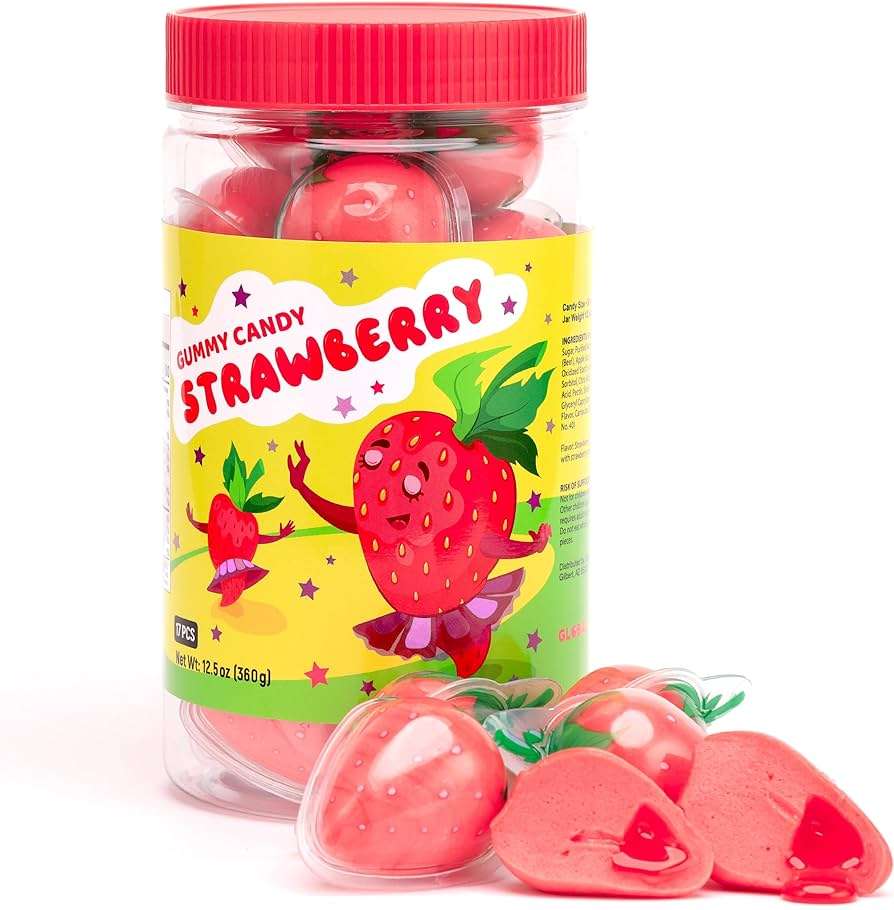Do Strawberries Need a Trellis? Strawberries do not need a trellis as they do not climb but benefit from raised beds or containers. When planting strawberries, it’s important to consider the best method to grow them effectively.
While strawberries do not naturally climb like other plants, they can flourish in raised beds or containers. You can create a thriving garden full of delicious berries by understanding how to support and care for your strawberry plants without a trellis.
Whether you grow them in pots, containers, or vertical planters, proper care, spacing, and mulching will contribute to a bountiful strawberry harvest. Let’s delve deeper into growing strawberries without needing a traditional trellis.
[ez-toc]
Benefits Of Using A Trellis
When growing strawberries, utilizing the available space efficiently is crucial. Gardeners can use a trellis to take advantage of vertical space, allowing more plants to be grown in a smaller area. This maximizes the yield per square foot and makes it easier to harvest the fruits, as they are more accessible and less likely to be damaged during picking.
One significant benefit of using a trellis for growing strawberries is the reduced impact of pests and diseases. Elevating the plants off the ground can help prevent certain pests and diseases, such as slugs and mold, which thrive in a moist environment. Additionally, better air circulation around the plants can minimize the risk of fungal infections, ultimately leading to healthier strawberry plants and higher yields.

Types Of Trellises
Vertical trellises are ideal for strawberries. They allow the plants to grow upwards, saving space and keeping the fruit off the ground.
Horizontal trellises support the strawberry plants’ horizontal spread, making it easier to access and harvest the fruit.
Arched trellises offer a unique and aesthetically pleasing way to grow strawberries, providing support and a decorative element to your garden.
When choosing a trellis for your strawberries, consider the space you have available and the growth habits of the plants to determine which type of trellis will work best for your garden.
Trellis Material And Setup
Trellis material and setup are crucial for supporting and protecting strawberry plants, especially if growing them vertically. Proper trellising can help keep the berries off the ground, providing better air circulation, sunlight exposure, and easier harvesting. It also helps prevent fruit rot and pest infestation, making trellises a beneficial addition to your strawberry garden.
Wooden Trellises
Regarding trellis materials, wooden trellises are a popular choice for supporting strawberry plants. Not only do they provide a sturdy structure for the plants to climb, but they also add a natural, rustic look to your garden. Wooden trellises can be made from various types of wood, including cedar, redwood, and pine. Cedar and redwood, in particular, are known for their durability and resistance to rot and decay. Installing a wooden trellis for your strawberries is relatively easy.
First, choose a location with plenty of sunlight and well-draining soil. Dig holes for the trellis posts, ensuring they are deep enough to provide stability. Then, insert the posts into the holes and secure them with concrete or gravel. You can use soft ties or twine to attach the strawberry plants to the trellis. Guide the plants towards the trellis and tie them regularly to ensure proper support. Regular maintenance includes pruning any damaged or overgrown branches and checking for signs of pests or diseases.
Metal Trellises
Metal trellises are another option for supporting strawberry plants. They offer strength and durability and can withstand harsh weather conditions. Additionally, metal trellises can provide a modern and sleek aesthetic to your garden. Common materials for metal trellises include galvanized steel, wrought iron, and aluminum. Galvanized steel is known for its rust-resistant properties, making it an excellent choice for long-lasting trellises.
Setting up a metal trellis is similar to that of wooden trellises. Dig holes for the trellis posts, ensuring they are deep enough to provide stability. Insert the posts into the holes and secure them with concrete or gravel. You can use plant ties or clips to attach the strawberry plants to the metal trellis. Be sure to guide the plants towards the trellis as they grow and secure them regularly. Regular maintenance includes checking for rust or corrosion and removing damaged or rusted sections.
Installation And Maintenance
Installing and maintaining a trellis for your strawberries is essential for their growth and productivity.
Here are some key points to consider: – Choose a location with plenty of sunlight and well-draining soil for optimal strawberry growth. – Ensure that the trellis material is sturdy and capable of supporting the weight of the plants. – Dig the holes for the trellis posts deep enough to provide stability. – Attach the strawberry plants to the trellis using soft ties, twine, clips, or plant ties. – Regularly prune any damaged or overgrown branches to promote healthy growth. – Check for pests or diseases and take appropriate action if necessary. – Monitor the trellis for any signs of rust or damage in the case of metal trellises. – Consider applying a protective coating or treatment to wooden trellises to enhance their durability.
Following these installation and maintenance tips ensures that your strawberries receive the necessary support to grow and thrive on a trellis.
Alternatives To Trellises
When growing strawberries, trellises are not the only option for providing support and maximizing space. Several alternatives can be equally effective in ensuring healthy and productive strawberry plants. Let’s explore some of these alternatives in detail.
Hanging Pots And Baskets
One convenient alternative to trellises for growing strawberries is to utilize hanging pots and baskets. By suspending the plants in the air, you can effectively save space and prevent pest infestations when strawberries are in direct contact with the ground. Hanging pots and baskets also offer good drainage and air circulation, which are crucial for maintaining the overall health of the plants.
Strawberry Cages
Another viable option for supporting strawberries is the use of strawberry cages. These cages offer protection from pests and birds while allowing for ample sunlight exposure. The cages also help contain the plants, preventing them from sprawling and making it easier to manage and harvest the fruit.

Frequently Asked Questions Of Do Strawberries Need A Trellis
Do Strawberries Need Runners?
Strawberries need runners for spreading in June-bearing varieties, but not day-neutral ones. Remove runners as needed for proper growth.
How Do You Support Strawberries?
To support strawberries, water them in the morning and avoid overhead watering. Protect against powdery mildew with Sevin Sulfur Dust and mulch with pine needles, straw, or hay. Strawberries don’t climb, but their long stems can be supported with stakes.
Remove runners in day-neutral strawberries.
Will A Strawberry Plant Climb A Trellis?
No, strawberry plants do not climb trellises, have tendrils, or have a clinging habit. They have long stems that can be bothersome in a regular garden plot.
Do Strawberries Need A Stake?
Strawberries do not need a stake for support as they do not climb or have tendrils.
Do Strawberries Need A Trellis?
Strawberries do not need a trellis as they do not climb or have tendrils to support them.
Can Strawberries Grow Vertically?
Yes, strawberries can be grown vertically using methods such as hanging baskets or containers stacked on each other.
Conclusion
Whether to trellis strawberries depends on the variety and your gardening goals. Consider using trellises for vining types, but not necessarily for bush varieties. Remember, proper support can enhance yield and efficiency in strawberry cultivation. Experiment with different methods to find what works best for your strawberries.


